
| Starting Price | Contact Sales |
|---|---|
| Free Trial | 14 days |
| Free Version | No |
Customer service software could transform your business more than you could imagine. It helps automate support, speed up response times, and boost customer engagement. But there are tons of options out there, so, how do you pick the right one? This guide highlights the best customer support software as well as the best customer service software of 2025.
The customer service landscape is constantly changing. The only way to stay ahead in 2025 is to have the right tools. In the next section, you'll discover the three best customer service software. You'll find an option that suits you, regardless of your business size.

| Starting Price | Contact Sales |
|---|---|
| Free Trial | 14 days |
| Free Version | No |

| Starting Pricing | Free |
|---|
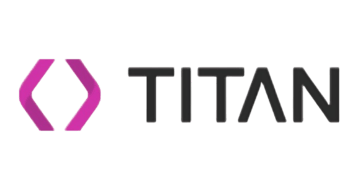
| Pricing Model | Per user |
|---|---|
| Free Version | No |
| Free Trial | Yes |

| Starting Pricing | $12/month |
|---|---|
| Pricing Model | Subscription Based |
| Free Trial | Yes |
| Free Version | Yes |
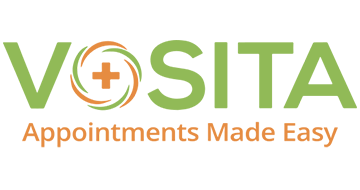
| Starting Pricing | $69/mo |
|---|---|
| Pricing Model | Per User |
| Free Version | Yes |
| Free Trial | Yes |

| Starting Price | $39/month (sales tax excluded) |
|---|---|
| Pricing Model | Subscriber based |
| Free Trial | No |
| Free Version | No |
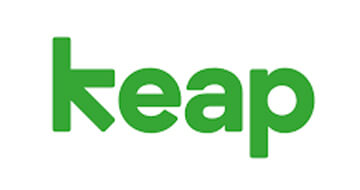
| Starting Price | $40/mo |
|---|---|
| Pricing Model | Subscriber based |
| Free Trial | 14-day |
| Free Version | No |
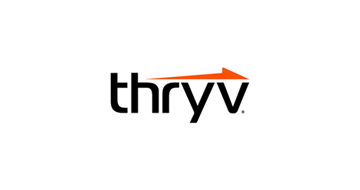
| Starting price | Quote only |
|---|---|
| Pricing model | User-based |
| Free Trial | 7-day |
| Free Version | No |

| Starting price | $50/mo |
|---|---|
| Pricing model | Subscriber based |
| Free Trial | 14-day |
| Free Version | No |

| Starting price | $9.9/mo |
|---|---|
| Pricing model | Per User |
| Free Trial | No |
| Free Version | Yes (limited features) |
Zendesk remains a leader in customer support. With its user-friendly interface and powerful features, it’s tough to beat. In 2025, Zendesk introduced the Resolution Platform, which delivers powerful AI-driven features. These features include AI agents for handling human interactions, CoPilot for assisting human agents, and Intelligent Triage for efficient ticket categorization.
| Pros | Cons |
|---|---|

Freshdesk is the best customer service software for small businesses because it enables small businesses to level up without breaking the bank. At an affordable price, it offers email and social ticketing, automation, team collaboration, and self-service tools. It also provides a free plan for small teams of up to two users.
| Pros | Cons |
|---|---|
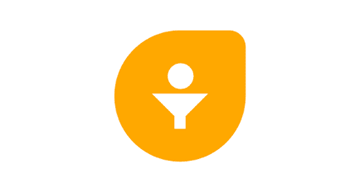
Customer service and support software is a digital solution that helps businesses manage, track, and respond to customer inquiries across multiple channels. It streamlines communication through features like ticketing systems, live chat, email support, and social media integration. Together, these functions ensure that no request goes unanswered.
This software helps businesses stay organized, resolve issues quickly, and improve customer satisfaction. Key features often include:
Understanding what customer service and support software entails is essential for any company looking to provide top-notch, consistent service. With these tools, you can boost team efficiency and enhance the entire customer experience.
However, don’t mix up customer service software with customer self-service software. You’re probably wondering, “what is customer self-service software?”
Customer self-service software empowers customers to find answers on their own. It includes knowledge bases, FAQs, and community forums. These resources reduce the burden on support teams while providing customers with 24/7 help. If you’re ready to give your customers the best experience possible, you’ll need a customer support system that includes customer self-service features.
Customer service and support software is all about organization. When a customer reaches out to a business, whether through email, chat, social media, or a contact form, the system automatically generates a support ticket. This ticket gets assigned to the right team member based on the issue’s topic, urgency, or customer profile.
With live chat features, customers can interact with the support in real time. Likewise, AI-powered chatbots can handle simple requests instantly, such as answering FAQs or providing order updates. Automation tools streamline the workflow further by tagging tickets, sending follow-ups, or escalating unresolved issues.
Implementing customer service and support software offers numerous advantages that can significantly enhance business operations and customer satisfaction.
Customer service software routes inquiries automatically and prioritizes urgent tickets. This automated approach ensures that no request is left waiting.
When customers feel heard and valued, they stick around. With easy access to past interactions and centralized data, agents can deliver more personalized, helpful responses. Companies that effectively use CRM tools to engage with customers experience increases in customer retention rates.
Support platforms enable agents to leave notes, assign tasks, and tag teammates. This way, everyone stays on the same page. Collaboration features keep everyone aligned, even across departments or remote teams.
Want to know what’s working and what’s not? Built-in analytics track crucial metrics like response time, ticket volume, and customer satisfaction. Managers can use this data to optimize workflows and make decisions that take support to the next level.
When choosing customer service and support software, don’t just settle for anything. You need features that work for your business. Here’s what to look out for:
A solid CRM system keeps all your customer info in one place. This includes contact details, interaction history, and purchase records. With everything centralized, support agents can quickly access detailed profiles and deliver a more personalized service.
Live chat functionality allows real-time communication between customers and support agents. Real-time communication means quicker responses, happier customers, and stronger trust.
Have you ever lost track of a support request? A good ticketing system makes sure that never happens. Each inquiry gets a unique identifier. This keeps requests organized, prioritized, and most importantly, resolved.
Think of the knowledge base as your customer self-help center. It’s packed with articles, FAQs, and guides that help you as a user find answers on your own, cutting down on support tickets.
AI-powered tools such as chatbots and automated workflows can handle repetitive tasks, respond to common queries, and route tickets to the right department. These features significantly reduce response times and free up human agents to tackle more complex issues. Businesses with high support volumes or limited staff particularly benefit from automation.
Advanced analytics provide insights into customer behavior, agent performance, ticket resolution times, and satisfaction scores. These metrics help businesses identify trends, optimize workflows, and make data-driven decisions to improve support quality.
This feature allows businesses to manage customer interactions across multiple channels from a single platform. It ensures a consistent experience regardless of how the customer reaches out. Omnichannel support is especially valuable for eCommerce platforms, SaaS companies, and any business with a large, diverse customer base.
Choosing the right customer service software isn’t just about flashy features, it’s about finding a system that fits your team, your customers, and your long-term goals. Here’s how to choose customer support software:
Start by taking a deep look at your current customer service workflow. Are you primarily fielding emails, live chats, or phone calls? How many agents are on your team, and do they specialize in different areas (like billing vs. tech support)? Knowing this helps you prioritize must-have features, like a ticketing system if you’re juggling a lot of inquiries or live chat if your customers expect real-time support.
Next, think like your customers. How do they prefer to reach you? Social media DMs? A chatbot on your site? A phone number with a real human on the other end? Consider conducting a short survey or pulling data from past interactions. The ideal software for you should support the channels your customers actually use, not just the ones that look good on paper.
Consider future expansion when choosing customer service software. If you expect rapid growth, choose a platform that supports automation, analytics, and integrations with tools you already use (like your CRM or eCommerce system). That way, you’re not forced to switch systems once your team or ticket volume expands.
Once you have a shortlist, dive into demos or free trials. Get your support team involved in testing the interface, and try simulating common tasks like assigning tickets or setting up a knowledge base.
Finally, compare pricing tiers carefully. Some platforms charge per agent, others per feature. Be sure to check what’s included in each plan, and don’t forget to evaluate their own customer support. After all, if they can’t help you quickly, that’s a red flag.
Time to pick your solution. Do your homework. Look for a customer service platform that meets your requirements. Consider
Don’t forget to involve key players from other departments to make sure the software works across the board.
Now, it’s time for action. Develop a detailed plan with timelines, resources, and milestones. Assign a project manager to oversee everything. After all, the best software won’t do much if it’s not set up correctly.
Finally, connect your customer service software with the tools you already use. These may include your CRM, email platform, or e-commerce system. These integrations create a seamless flow of data and give your team all the context they need to resolve issues faster.
The cost of customer service and support software can vary greatly, depending on your provider, the features you need, and how much you plan to use it. Some platforms price based on the number of agents, while others may charge based on feature access or usage volume. So, what’s the key here? Know exactly what you’re paying for, and, more importantly, what you really need.
Start by assessing your support needs. Do you need advanced features like automation, analytics, or omnichannel support? If so, a premium plan could be worth the investment. But if you’re a small business or startup with less traffic, a free or entry-level plan might be all you need to get started.
Most paid plans will cost you anywhere between $10 to $100+ per agent, per month. Higher-tier plans typically offer perks like advanced analytics, custom workflows, integrations, and SLAs (service level agreements). Be cautious of hidden fees. Some platforms charge extra for add-ons like AI tools or API access.
Artificial Intelligence (AI) is taking customer service to new heights. It’s automating everything from ticketing to chat responses and even predictive support. AI chatbots and virtual assistants are now providing 24/7 support, slashing wait times and cutting costs. Predictive analytics can anticipate customer needs, offering personalized support that builds loyalty and satisfaction. Reports show that AI agents cut case resolution time by 52 percent.
AI-powered voice assistants and conversational interfaces make smoother customer communication. These tools enable customers to engage through voice commands, offering a more natural, human-like interaction. Voice assistants handle routine queries, freeing up agents to tackle more complex tasks. According to Gartner, 80 percent of companies are projected to use or plan to adopt AI-powered chatbots for customer service by 2025.
The rise of remote and hybrid work means customer service software needs to be more flexible. The latest platforms integrate multiple communication channels into a single platform, so your team can deliver consistent, high-quality service, no matter where they are. With tools like Zendesk, agents can manage support tickets across all channels, from anywhere. As of 2024, 85 percent of customer service teams operate remotely or in a hybrid setup.
There’s no one-size-fits-all when it comes to customer service and support software. The key is to align your choice with your business’s unique needs and priorities.
With a wide range of pricing models and feature sets, it’s essential to explore demos, test free trials, and read up-to-date reviews. Taking the time to choose the right platform can significantly enhance your customer experience and support long-term business growth.